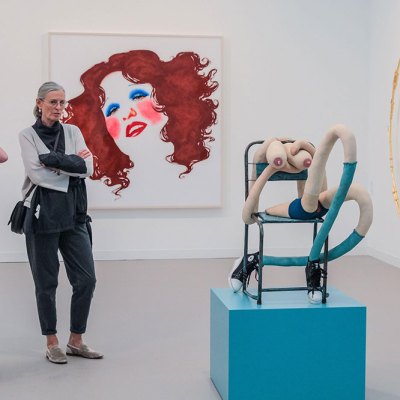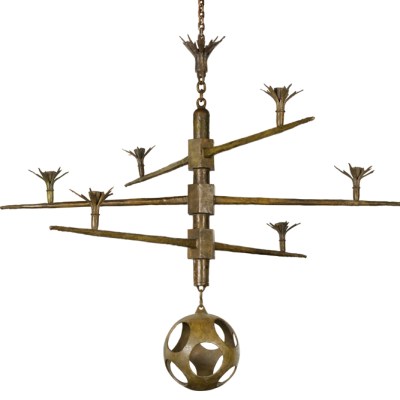With hundreds of exhibitions and events vying for your attention in London during Frieze week, Apollo’s editors pick out the shows they don’t want to miss
In a month that has seen a renewed focus on the fashion (and consumerism) of the 1990s thanks to the Apple TV show The Super Models, it is a surprisingly apt moment to visit Sprüth Magers on Grafton Street for their exhibition ‘S.F.’ of works by the Swiss artist Sylvie Fleury (until 4 November). Fleury has always played with the intersection of desire and art. The knowing wit with which she presents her shopping bag installations on the ground floor of the gallery offers a provocation around how the big fashion brands operate. There is something deeply satisfying about the sureness of touch that groups together the different bags into compositions to be admired and interrogated. The mirror at the back of the room suggests this is much more than just recycling – or to use a fashion word, ‘upcycling’ – the detritus of shopping into an artwork; it is, of course, about identity. Elsewhere, other works – from motorcycle clubs to handbags on pedestals – play games with desirability and feminism that are equally assured and satirical. Back on the ground floor, changing rooms are signified by curtains hanging in the rear of the room in a rather fetching shade of pink velvet. Trying things on, casting them off, trying again – it’s a game, and an art, worth practising this Frieze week.
Installation view of ‘S.F.: Sylvie Fleury’ at Sprüth Magers, London. Photo: Ben Westoby

The tricks brands use to seduce us into falling in love or lust with their products is nothing new; proof of this comes at the Soane Museum. ‘Georgian Illuminations’ (until 4 January 2024) reveals how bright lights and big displays were used to entertain the public – not unlike the magnificent advertising displays at Piccadilly Circus. Co-curators Melanie Doderer-Winkler and Louise Stewart have brought these ephemeral events to life through a display that includes designs by Robert Adam and other leading artists and architects. John Soane’s own plans for the illumination of the Bank of England, to mark the recovery of George III from illness in 1789 and the Jubilee in 1809, are included in the exhibition, along with two linen transparencies that were created to celebrate the defeat of Napoleon.



